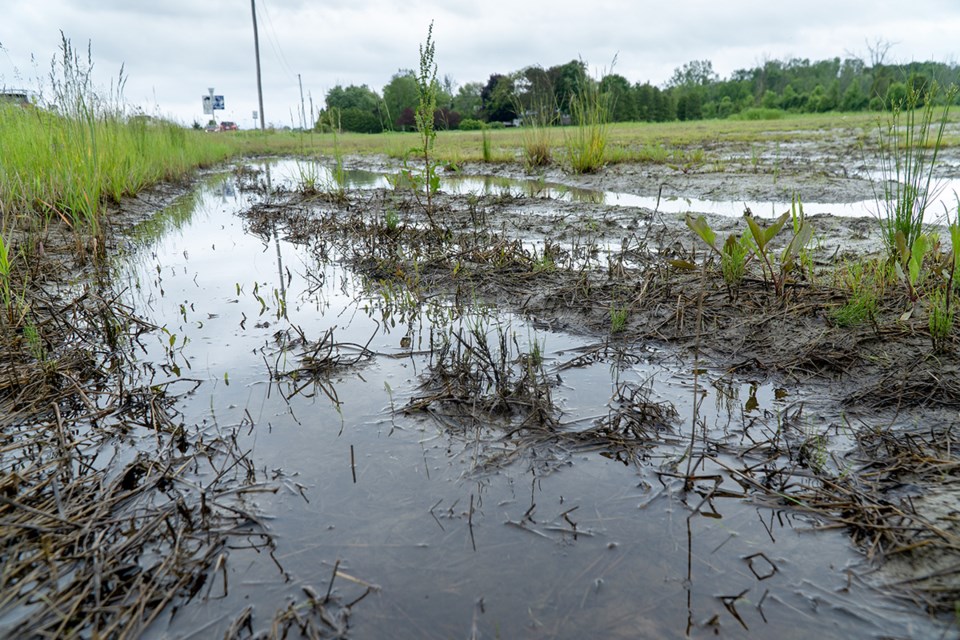Troy Shantz
The weather this spring has been so wet and rainy that some Sarnia-Lambton farmers had not yet planted a single seed in the ground by last week, let alone a full crop.
Corn is normally planted in May and soybeans follow in June. But most local farmers are weeks behind schedule and some have already given up this year on planting corn, one of Sarnia-Lambton “big three” cash crops.
Farmer Mark Lumley took advantage of a brief dry spell the second weekend of June to plant 980 acres of corn in three days.
“Almost every piece of iron in the county was rolling long hours,” said Lumley, who worked 20-hour days to accomplish what normally takes two weeks.
He said this year was the latest he has ever seeded, and by last week some farm fields in Sarnia-Lambton still hadn’t sufficiently dried out for planting.
Don McCabe, the Lambton-Middlesex director of the Ontario Federation of Agriculture, said if seed corn isn’t in the ground early enough it can’t absorb enough heat to produce a decent yield.
And for a crop to be insured, it must be planted by a preset deadline, he added.
Agricorp, a provincially run crop insurer, pushed the corn planting deadline for this area back two days to June 17 to buy farmers some additional time.
Likewise, the soybean deadline has been extended to July 5 from June 30.
McCabe said it’s not unusual for the insurer to extend regional deadlines because of uncooperative weather, but moving them across the entire province is rare.
“We may have corn planted (but) the soil conditions are so crappy, so waterlogged, it doesn’t matter if you do have it planted. The seed may just plain rot in the ground,” he said.
For producers who rely on silage corn to feed livestock the uncertainty is extremely stressful, he said.
“Where is this corn going to come from if there’s none to buy?”
Heavy rain last fall also decimated the winter wheat crop, which is planted in October and November and harvested the next year.
McCabe estimated 90% of the winter wheat crop is lost.
Corn farmers also had to deal with an unprecedented outbreak of vomitoxin in 2018. The pink mould, which thrives in wet and cold temperatures, made many crops unfit for sale or was heavily discounted at market.
McCabe said vomitoxin is a risk again this year, as are other potential plant ailments that lurk in wet fields.
Coping with unpredictable weather challenges is nothing new, of course, but if current conditions are the new normal government will need to step up with improved drainage programs, subsidies and other supports, he said.
Corn is eastern Canada’s most important crop and worth $550 million to Sarnia-Lambton alone.
“We’re seeing variability in our environment,” McCabe said. “If it takes a climate change label for a politician to finally wake up and do the right thing for agriculture, then we’ll do that.
“We’ve got to start to wake up and see if this is the way we want our world to be, because this is a very stressful time.”
